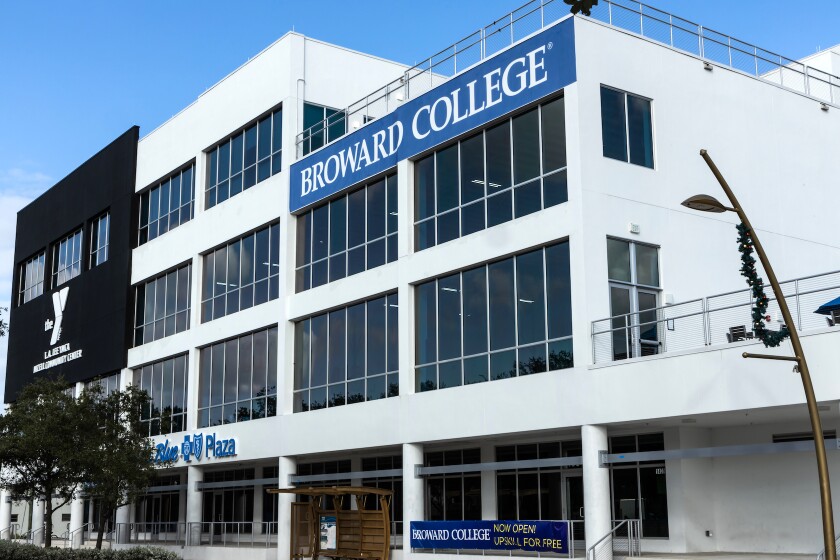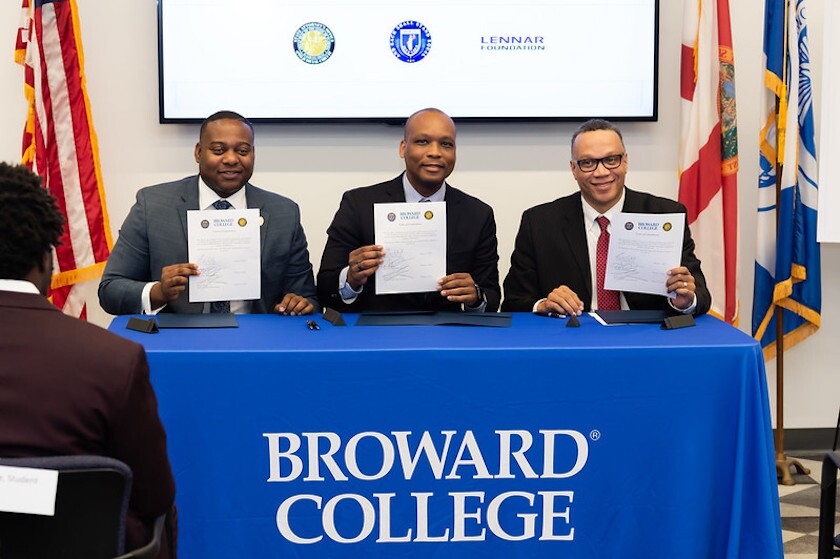In Brief:
Community colleges can open the path to a university degree or a good job to students of all ages, regardless of their academic or financial status. It’s been assumed they will play a major role in lifting up disadvantaged communities and meeting the private sector’s need for skilled workers.
A report published last month by the National Student Clearinghouse Research Center made national news with its finding that community college enrollment had declined 37 percent since 2010. While completion rates have crept up, just over 4 in 10 students earn a degree, compared to almost 70 percent at public four-year colleges.
“The reckoning is here,” read one headline. President Biden, married to a community college educator, isn’t giving up on the system. His budget for Fiscal Year 2024 includes $500 million for free tuition, a proposal that is not expected to make it through Congress.
Despite the sobering statistics, there are success stories in this education sector. And even with enrollment declines, community college students greatly outnumber those at four-year public colleges.
Gregory Haile, the president of Broward College in Fort Lauderdale, Fla., has no doubts about the potential for these institutions to bring out untapped potential in young people and working adults. In a conversation with Governing, he outlined some of the steps he is taking to make it “impossible” for his community to be unaware of what his college has to offer. This interview has been edited for clarity and length.
Governing: There’s been a fair amount of press recently raising concerns about community college enrollment and completion rates. What can be done to turn things around?
Gregory Haile: One of the ways we like to talk about this work is asking what it looks like to become more proximate to communities.
Community colleges, which are open access institutions, are designed to serve everyone. But for years we have been asking the most challenged members of our community — those who have no transportation, those who have very limited technology, if any, single parents working multiple jobs who have to get children to child care — to come to us.
What would it be like if we no longer ask those people with no time, no technology and no transportation to come to us, but we went to them? What does it look like to make it impossible for people not to see the opportunity?
Governing: How do you work toward that?
Gregory Haile: Here's what it starts to look like. We’ve partnered with cities, we've partnered with nonprofit organizations, and we have asked them to identify space in communities that have the highest unemployment rates and lowest education attainment rates. We've asked them to provide that space to us at no cost.
What we've been able to do then is bring our faculty, our advisers, our programming and our technology to the hearts of those communities.
We have 10,000 square feet on the fourth floor of a beautiful new YMCA building. The most beautiful component of that facility is that it is surrounded by low-income housing within steps of it. Now, people looking out their bedroom or living room windows see college right across the street.
They no longer have to find a way to get to us. We've become truly accessible by coming to them.

(Broward College/Downtown Photo)
Gregory Haile: We talk about it in three ways. We talk about geographic proximity, as just discussed. We talk about social proximity: When a student gets to your campus, you want to create a sense of belonging.
I would challenge every institution not to wait until someone gets to your campus to create a sense of belonging. What does it look like to be a part of their community, so that they have a sense of belonging long before they arrive on your campus, if they ever do?
The final point is financial proximity. Every course at the sites we've created in communities that have the highest unemployment rates and lowest education attainment rates has been taken at no cost to the student. We know that there are many individuals who will stop just with the notion that it will cost them anything.
Broward College is affordable; we were recognized by U.S. News and World Report for having the least amount of student debt among all colleges and universities in the southeastern United States.

(Broward College)
Governing: How have you worked with local government?
Gregory Haile: Mayors and commissioners know their unemployment rates, but oftentimes they don't know the leading indicator of that unemployment rate, the educational attainment rate.
We work with our cities to help them understand their attainment rates and the relationship between them and their unemployment rates. The light bulb goes off and it becomes, “What can we do?”
Penetrating communities is really a partnership between a college and every city in its community to make sure that collectively, we are providing opportunities for attainment, lifting job opportunities, and lifting the strength and fortitude of the city.
Governing: Are you working with the business community?
Gregory Haile: We have a collection of business leaders that work together to solve material issues within the community. We’ve reached partnerships in which they've agreed to hire and retain talent coming out of communities with high unemployment and low educational attainment rates.
We call them Broward UP communities, which stands for “unlimited potential.”
We don't talk about them as being needy, we talk about them as individuals with unlimited potential that we need to make sure we are optimizing.
Governing: Do you work with high schools?
Gregory Haile: We're doing it in a number of ways. Dual enrollment is a significant area of growth for us; we have about almost 10,000 dual-enrolled students.
When we launched dual enrollment programs, we wanted to make sure that there were programs available not just for students who are moving into universities, but for those who could acquire skills while in high school that could lead to great workforce opportunities.
I believe we were the first college in Florida to develop a dual enrollment workforce credential. It was in the aviation space. Aviation has incredibly high-paying jobs with a breadth of opportunities. People think about becoming a pilot, but there's maintenance and mechanics and many high-paying job opportunities.
In the first year, we had about 60 high schoolers in the program. What was great is that about a third of them were women.
Governing: Are there other ways you’re engaging with the community?
Gregory Haile: Our public defender's office, our state attorney's office and Broward College have come together to develop programming and curriculum that would allow very low-level offenders to be diverted into a postsecondary attainment opportunity at Broward College instead of facing a sentence, with the victim's consent.
There’s another program in the same realm. A few years ago, I called the head of the Florida Department of Corrections. There is a relief center in Broward County that houses women in the last 18 months of their sentence.
When I reached out, I asked what it would be like if they had the opportunity to be trained at no cost by Broward College to make sure that when they transitioned, they had the skills necessary to move into the workforce, reducing the chance of recidivism.
The entire Department of Corrections team said, “absolutely,” and we brought that partnership to fruition earlier this year as well.

(Broward College/Downtown Photo)












